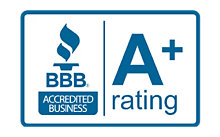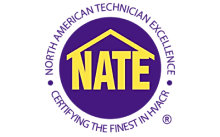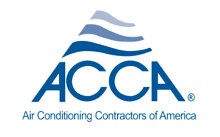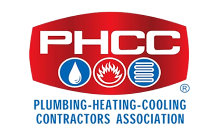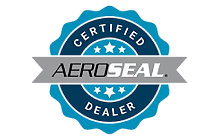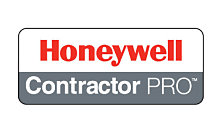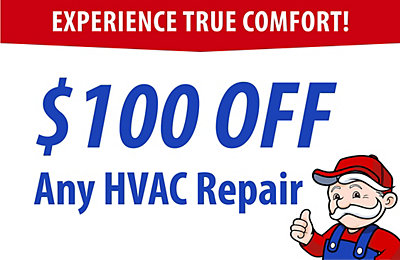Louisville Whole House Ventilation Services
Whole-house ventilation is an important concept homeowners use to enhance indoor air quality across the whole living area. One benefit of old homes is natural ventilation, where air leaks and other openings make a path for air exhaust and supply, but most new homes lack this. In homes without ventilation systems, it is a struggle to maintain the proper amount of moisture and pressure balance in both warm humid climates, and cold climates.
Modern home building places a good amount of importance on the efficient performance of heating and air conditioner systems. This practice may be best for energy conservation, but it is a detriment to ventilating the space. The air supply inside a home experiences mounting moisture and airborne contaminant levels without necessary ventilation, causing a stagnant feeling that makes for difficult comfort control. In the winter, we’re often so concerned with keeping our heat energy indoors, that air quality suffers greatly in exchange.
A whole-house ventilator is the best method to provide the mechanical ventilation required to bring air into the house. Whole house ventilation keeps humidity levels under control as systems exhaust the stale, polluted air from the living area to the outdoor air. Fresh air sourced outside is used as the incoming supply air to improve indoor climates. Use a heat recovery or energy recovery ventilation system to boost indoor air quality without a high amount of energy waste.
Jarboe’s Heating, Cooling & Plumbing brings Louisville homeowners the best options for whole-house ventilation systems. Work with our Comfort Consultants to find a recovery ventilator that creates enough comfort during hot and cold seasons, while maintaining efficient HVAC performance and pressure. Request an estimate today.
The Importance of Whole Home Ventilation
When building a new home today, contractors focus on creating a tight building envelope to minimize heating and cooling energy losses. While these homes can be very efficient, they often suffer from air quality issues if there is not a ventilator in place. Most homes are equipped with ventilating equipment known as spot ventilators, which exhaust air from areas of the home such as the bathroom or kitchen – these ventilators provide some degree of help, but they cannot manage whole house ventilation on their own.
Natural means of ventilation aren’t used as much as they were in the old days. Windows and doors are kept shut to help the home retain heating and cooling, so no fresh air naturally moves through the living area. To avoid the moist, stagnant, polluted climate that eventually develops within the rooms of a home, ventilation systems are needed to exhaust and supply air and reduce the likelihood of damaging moisture problems. Ventilation systems exhaust indoor air to the areas outside of a home while drawing in fresh outdoor air to replace it.
What Are Whole House Ventilation Systems?
Whole house ventilation systems exhaust and supply air throughout the living area to improve the quality of the indoor air. These ventilators use ducts, fans, vents, and other mechanical ventilation equipment to perform this process. The main kinds of mechanical ventilation systems are:
- Exhaust ventilators only exhaust indoor air to areas outside. Because the ventilation system doesn’t bring in fresh air, outdoor air eventually infiltrates the home through passive vents and air leaks. This process causes depressurization, which can lead to outdoor air contaminants entering the home. Moisture infiltration is another concern, which makes this solution not a good choice in warm humid climates.
- Supply ventilators bring in a supply of fresh air to the living area. This system does not exhaust the existing indoor air, so it is eventually forced out through air leaks and vents due to the pressure created through the process. Supply ventilation systems are usually installed in hot climates – moisture issues arise when used in cold climates, as humidity condenses as air moving through the structure cools.
- A balanced system both exhausts indoor air and supplies fresh outdoor air to the home in equal volumes. Fresh air is brought into the main living areas while stagnant air is expelled from areas such as bathrooms and the kitchen. This ventilation system is suitable for use in homes of all climates.
One significant concern with these ventilation systems is energy waste – they do not heat, cool, or dehumidify the incoming makeup air. Therefore, the HVAC system must do so which increases the cost of energy and use. Two recovery ventilator types, energy recovery, and heat recovery, work to conserve and reuse the home’s existing energy when exchanging air.
- A heat recovery ventilator, or HRV, performs heat recovery as air is exhausted from the home. Heat is extracted by the ventilator heat exchanger and added to fresh air before it enters the living area. This process preheats fresh air to minimize temperature fluctuations and limit excess energy consumption by the home heating system.
- An energy recovery ventilator, or ERV, performs both heat recovery and energy recovery by pulling heat and moisture out of exhaust air before it leaves the home. Fresh air undergoes pretreatment where this heat energy is added along with moisture in the winter to avoid dryness indoors. During hot humid months, ERVs work to pull excess humidity out of the incoming fresh air before it reaches the living area so that moisture levels are not increased indoors.
The Best Whole House Ventilation Systems for Louisville Homes
Overall, the best whole-house ventilation system for improved indoor air quality and energy conservation is an energy recovery ventilator. ERVs have the unique ability to conserve moisture and heat energy for reuse as fresh air comes into the home. ERVs do cost more upfront, but they don’t cause the high amount of heating and cooling energy loss that certain other ventilators do. Saving about 70 to 80 % of the home’s energy, an ERV helps you lower HVAC system energy consumption for the best efficient performance and comfort control.
Honeywell Energy Recovery Ventilator
When shopping for ventilation systems to install in your Louisville area home, turn to the pros at Jarboe’s Heating, Cooling & Plumbing for a professional recommendation. An energy recovery ventilator generates enough energy savings to produce great value for the cost. We recommend the Honeywell CFM Energy Recovery Ventilator for installation in your Kentucky home. Using ERVs, homeowners keep indoor climates balanced without losing precious heating and cooling dollars in the pursuit of better indoor air quality.
Amid the humid climates we experience during the summer, your ERV fan works to exhaust built-up heat and moisture from the home’s living area while bringing in fresh air as a replacement. Effective moisture management prevents the indoor environment from increasing in humidity, which can cause moisture issues to develop. This process makes less work for your air conditioner, resulting in lower energy consumption for home cooling.
During winter when cold climates descend on Louisville, ERVs provide an ample amount of heat energy savings. Little heating energy is lost with exhaust air, as the system harvests and reuses this heat energy to warm outdoor air before it reaches the home’s interiors.
Use an energy recovery ventilator for more than just temperature and moisture control! The exchange of fresh air for stale air eliminates foul odors from inside your home. Lingering odors like cleaners, cooking smells, and smoke are sent outside while your home is filled with fresh air. Airborne contaminants are removed from the home to decrease the concentration of common allergens and other pollutants inside your living areas. Loved ones with allergies, asthma, and other respiratory issues can breathe easier and feel more comfortable at home.
Pair your new Honeywell ERV with your existing heating and cooling system – it is compatible with most gas, electric, and oil furnaces, air conditioners, and heat pumps. The Honeywell design team has streamlined the footprint of this recovery ventilator to eliminate the need for overhead ducts and reduce installation demands.
With a Honeywell Energy Recovery Ventilator installed in your home, you’ll enjoy mechanical ventilation that keeps pressure balanced and doesn’t cause unwanted disturbances during operation. Run the ERV fans with heating and cooling cycles, or cycle the fan independently for better air quality on demand. This Honeywell recovery ventilator is backed by a 5-year warranty.
Find the perfect whole-home ventilator for your household with the help of Jarboe’s Heating, Cooling & Plumbing. Contact us today to request an estimate for a new Honeywell ERV.
Our Guarantees
No Guesswork
When we say "This is how much it is" that's how much it is. Period.
"It Will Work"
No excuses or stories, just service when you need it!
100% Money-Back Satisfaction
We'll make it right or remove the system and return 100% of your money.
Client Respect
If we dirty it, we'll clean it. If we damage it, we'll fix it. Plain and simple.
Safe and Secure
The right company and the right people in your home, ensuring your job is done right and your peace of mind is protected.
What Our Clients Are Saying
Award Winning & Industry-Leading
Who Is MAX?
Max is an important part of our team. He is more than just a cartoon character. Max represents our commitment to quality work, craftsmanship, pride, and passion to serve our clients and community. We celebrate this mentality through Max because these values drive us to be the area’s most complete and comprehensive home service company. So, now when you see Max, you’ll know the story behind the man with the mustache!



